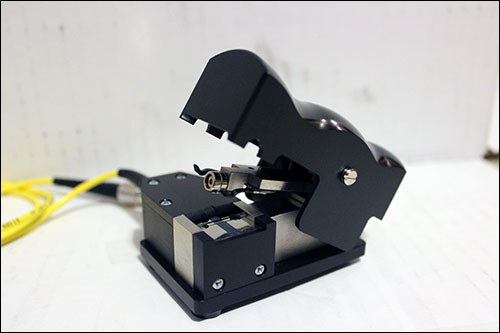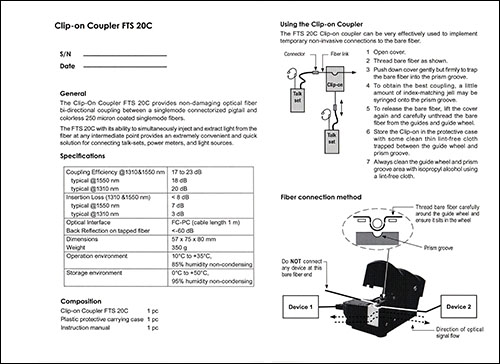Fiber Optic Tapping - Introduction
Fiber optics is a technology that allows ultra-fast communications over longer distances compared to what copper cables can offer. This is accomplished by pulses of light beamed down a glass fiber (or plastic).
This tech has been around for several decades and is by no means new and with time has come smaller connectors, faster transmission speeds, and many other improvements. However, due to how fiber optics are made, how they have to be made, this introduces some unique traits and I will be taking advantage of one of them.
A standard indoor fiber optic cable is made of roughly five layers
- Cable Jacket
- Strength Members
- Buffer/Coating
- Cladding
- Optical Fiber Core
Other types of fiber optic cabling may have more or less layers, but I will be focusing on the above.

We are able to send these pulses of light down the fiber core due to the cladding. The cladding is the layer surrounding the fiber core. This layer can also be glass or plastic, it typically depends on the quality of the fiber whether it is one or another. The cladding's job is to keep the pulses of light inside the core. This is possible because the cladding has a lower refractive index (think of when you look at a straw in a glass of water, how the angle changes) than the refractive index of the core. This creates what is called "total internal reflection" and keeps the pulses of light inside the core so it arrives intact at the other end of the cable.
Now, going back to what I mentioned previously, the cladding is one of the unique traits of fiber optics and is absolutely required in order to guarantee the intended operation of the cable. This also is what allows the method of tapping known as "bending" to be possible.
When a fiber optic cable is bent at a certain angle, a small amount of light will leak out of the cladding, small as in 1-2%. This is more than enough as that 1-2% has 100% of the data traveling through the cable. This is possible due to the simple fact that with a small radial bend in the fiber, the cladding just cannot bounce the light back into the core, which causes the light to be lost through the cladding. Bending employs the use of a piece of hardware known as a "fiber optic clip-on coupler". This coupler is specially designed to be used by line-technicians working on what is known as "talk fibers". These fibers carry voice streams and the line tech will use this coupler to attach passively onto the fiber to ensure proper installation or to troubleshoot.


Because the coupler can be used this way, it can also be used to intercept data in a fiber optic cable if you are listening with the right tools. However, unlike a line technician who has a "splice tray" full of readily accessible fibers, we will need to open the above-mentioned standard indoor cable and access the fiber inside. This is not an easy task as it requires patience, steady hands and a little trial and error. I will cover accessing the internal layers of a fiber optic cable in my next post.